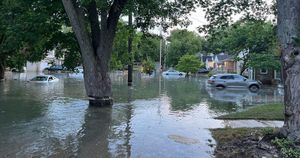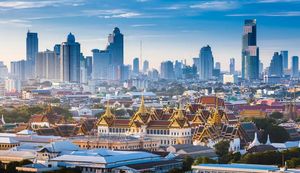Almost immediately after taking office for his second term, President Donald Trump is confronted with renewed challenges concerning Iran and its nuclear ambitions. Since his return to the White House, Trump's administration signals intentions to revert to its controversial "maximum pressure" strategy, reminiscent of his first term from 2017 to 2021. Amidst fears of regional instability, the Trump administration's diplomatic and military strategies are shaping up against the backdrop of changing alliances and volatile dynamics.
One of the central figures shaping this policy is National Security Advisor Mike Waltz, who has made it clear the White House plans to reinstate maximum pressure, aiming to transform Iran's geopolitical stance. Keith Kellogg, Trump's envoy on Ukraine peace, echoed this sentiment, advocating for the world to return to economic and political pressure on Iran with the hopes of fostering democracy within its borders.
Contrary to these assertive stances, observers caution against returning to aggressive sanctions without considering the new regional dynamics—especially the recent agreement brokered by China restoring diplomatic ties between Iran and Saudi Arabia. This historic reconciliation signals possible challenges for Trump as he attempts to rally Gulf allies support for another “maximum pressure” campaign, particularly with Saudi-related hesitations on supporting active conflict with Tehran.
Comments from Saudi Crown Prince Mohammed bin Salman reflect this unease, as he has emphasized Iranian territorial sovereignty during current Mideast tensions. During Israeli-Iranian retaliatory strikes, the Saudi leader encouraged the international community to deter Israel's incursions. According to analysts, the potential for military action against Iran’s nuclear facilities must also be weighed against the risks of insufficiently damaging its nuclear program, which could simply lead to the reconstitution of Iran’s nuclear capabilities, as pointed out by nuclear expert James Acton.
Meanwhile, Iran appears to be adopting a defensive posture as Trump's policies emerge. Tehran is recalibrated to gauge the impact of Trump's return, curtailing its regional proxies and signaling openness to dialogue about its nuclear ambitions. Supreme Leader Ayatollah Ali Khamenei recently acknowledged this dynamic, stating the importance of vigilance when engaging with the U.S.
“Behind the smiles of diplomacy, there are always hidden and malicious enmities,” Khamenei stated on January 28. This statement encapsulates Iran’s wariness of succumbing to perceived American deceptions, emphasizing the intricacies of the situation.
The Iranian Foreign Minister Abbas Araghchi has also underscored Iran's readiness for renewed negotiations but highlighted the importance of reciprocal commitments: “If the other side is serious,” he reiterated, stressing the necessity for genuine dialogue.
Concurrently, Trump's administration has engaged actively with allies to reassess strategies concerning the conflict-ridden Gaza Strip and Syria, demonstrating sensitivity to regional stability. Trump’s new appointee as Middle East envoy, Steve Witkoff, is positioning the administration to negotiate on these matters, showing intent to navigate through complex regional realities.
Under Trump's new government, the Iranian dilemma remains central. Analysts have pointed out the difficulty of achieving denuclearization agreements with Iran, especially after the nation fortified its alliances with Moscow and Beijing during the interim years of Biden’s administration. This multifaceted quandary also includes Iran’s notable threats surrounding its nuclear program, with Khamenei's advisors openly discussing the nation's military capabilities.
On January 22, Trump mandated the re-designation of Houthi rebels as a foreign terrorist organization, complicity underscoring the administration's aggressive posture toward Iran and its proxies. This action encapsulates Trump's broader geopolitical strategy, which mirrors his past tactics of leveraging economic sanctions as tools of statecraft.
Although Trump's renewed term signals significant shifts, the administration faces enormous hurdles: countries like Egypt and Jordan have rejected proposals for Palestinian resettlement, making cooperation increasingly complex, as their leaders emphasized the inherent injustices these plans represent.
The approach of Trump’s new administration reflects ambitions to stabilize not just the U.S. stance, but the entire region, indicating potential military interventions over diplomatic efforts. Senate figures such as Lindsey Graham have already pushed publicly for preemptive strike options against Tehran, citing the urgency of countering perceived Iranian threats.
Internal debates within Iran highlight the divides between its conservative and reformist factions over whether renewing negotiations with the U.S. could yield favorable outcomes. While some view Trump's presidency as obstructive due to past U.S. behaviors, others, including President Pezeshkian, hint at possibilities for fresh dialogue.
What emerges next within these geopolitical theater dynamics will determine the future course of U.S.-Iran relations and the broader Middle East—raising concerns about the fragility of peace initiatives amid heightened militaristic posturing.
With Trump’s shifting strategies toward Iran coming to light, the consequences of these decisions may hold high stakes, both for the U.S. and for regional partners searching for stability.



